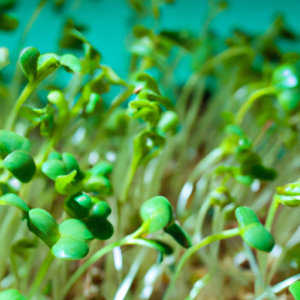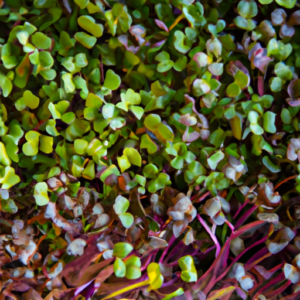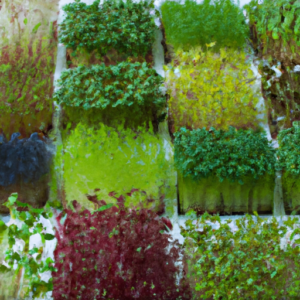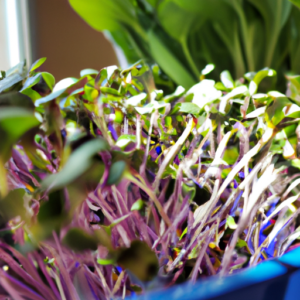Are you an aspiring microgreens enthusiast or a seasoned professional in the industry? Look no further than Microgreens World, your ultimate source of information on all things microgreens. Whether you’re interested in tasty recipes, exploring the health benefits of these tiny nutritious powerhouses, or even delving into the business strategies that can propel your microgreens venture to new heights, this website has got you covered. From improving hair, skin, and eye health to boosting your immune system and aiding in natural detoxification, the articles on Microgreens World leave no stone unturned. Get ready to learn about specific microgreens varieties, like the nutrient-rich quinoa microgreens, and discover invaluable tips on pricing, packaging, and selecting the most profitable varieties. Above all, embrace the mindset of growth as you navigate the challenges and reap the rewards of the thriving microgreens industry.
Common Challenges in the Microgreens Industry
Microgreens have gained popularity in recent years due to their unique flavors, nutritional value, and versatility in culinary applications. However, like any industry, the microgreens industry poses its own set of challenges for growers and producers. In this article, we will explore some of the common challenges faced by microgreen farmers and discuss strategies to overcome them.
Pest and Disease Management
One of the biggest challenges in the microgreens industry is effectively managing pests and diseases that can negatively impact crop yield and quality. Identifying and preventing pest infestations is crucial to maintaining a healthy crop. Implementing integrated pest management (IPM) techniques, such as regular scouting, crop rotation, and the use of physical barriers, can help control pest populations.
Furthermore, organic pest control methods can be employed to minimize the use of synthetic pesticides. This includes the use of natural predators like beneficial insects, such as ladybugs and lacewings, that feed on common pests. Additionally, practicing good sanitation and hygiene in the growing area can help prevent the spread of diseases.
Seasonal Growing Challenges
Managing microgreen production throughout the year can be challenging due to seasonal variations in temperature, humidity, and light availability. Adapting to these changing conditions is essential for consistent and successful crop production.
During colder months, growers may need to invest in heating systems or utilize alternative methods, such as grow lights, to maintain optimal temperature and light levels for growth. In contrast, during hot and humid periods, proper ventilation and moisture control measures must be implemented to prevent mold and fungal diseases.
To address limited availability of fresh produce during certain seasons, growers can explore alternative varieties that are well-suited for specific conditions. Additionally, adjusting nutrient requirements based on seasonal changes can help optimize plant growth and minimize potential nutrient deficiencies.
Managing Production Costs
The cost of production is a significant concern for microgreen farmers, especially for those operating on a smaller scale. To maximize profitability, it is crucial to carefully manage production costs.
Investing in efficient production systems, such as indoor vertical farming or hydroponics, can help save space and resources while improving productivity. Reducing energy consumption by utilizing energy-efficient lighting systems and optimizing water usage through drip irrigation are additional strategies to reduce costs.
It is also important to source affordable inputs and equipment without compromising on quality. Conducting thorough research and comparing prices from different suppliers can help identify cost-effective options. Calculating the cost of production for each crop can provide insights into the profitability of specific microgreen varieties.
Maintaining Quality Control
Maintaining high-quality standards is essential for success in the microgreens industry. Implementing Good Agricultural Practices (GAP) ensures that food safety guidelines are followed, preventing any contamination risks. Regular monitoring and controlling of the crop environment, including temperature, humidity, and ventilation, are necessary to create optimal growing conditions.
Proper harvesting techniques, such as using clean and sharp tools and harvesting at the right stage of growth, help preserve flavor and texture. Implementing post-harvest handling protocols, including washing and packaging microgreens correctly, prevents deterioration and extends shelf life.
Conducting regular quality assurance checks ensures that only the best microgreens are being distributed to customers. This includes evaluating factors such as color, texture, taste, and overall appearance.
Marketing and Selling Microgreens
As with any business, marketing and selling microgreens can be a challenge. Identifying the target market and understanding their preferences is crucial for success. This involves conducting market research to identify potential niches and develop specific marketing strategies to reach those customers.
Developing a unique selling proposition that sets your microgreens apart from the competition can help attract customers. This can be achieved by highlighting the nutritional benefits, superior flavor, or unique varieties that you offer.
Creating an effective branding strategy, including a memorable logo, packaging design, and consistent messaging, helps establish a strong brand identity. Building relationships with chefs and restaurants who value high-quality, locally sourced ingredients can also boost sales.
Utilizing online platforms and social media is essential in today’s digital age. By creating engaging content, showcasing recipes and nutritional information, and running targeted ad campaigns, growers can reach a wider audience and attract potential customers.
Competing with Large-scale Producers
Competition with large-scale producers can be daunting for small-scale microgreen farmers. However, by focusing on quality, uniqueness, and personalized customer service, small-scale growers can differentiate themselves from mass-produced microgreens.
Emphasizing the superior quality and local sourcing of your microgreens can resonate with customers who value freshness and flavor. Offering unique microgreen varieties that are not readily available in larger markets can attract customers seeking something different.
Providing personalized customer service, such as offering customized orders or delivering directly to restaurants or local businesses, can help build strong relationships and gain customer loyalty. Collaborating with local farmers and suppliers can also create a sense of community and strengthen the local food movement.
Finding Reliable Suppliers
For microgreen producers, finding reliable suppliers for seeds, growing media, and other inputs is crucial for consistent crop production. Researching and evaluating potential suppliers is essential to ensure that they can meet your quality and quantity requirements.
Establishing long-term relationships with suppliers who consistently deliver high-quality products on time is beneficial for both parties. This allows for better negotiation of pricing and contract terms, ensuring that you are getting the best value for your money.
However, it is important to maintain backup supplier options in case of any unforeseen issues or changes in supply availability. This minimizes production disruptions and ensures a steady supply chain.
Dealing with Perishability
Microgreens have a short shelf life and must be handled carefully to maintain freshness and quality. Optimizing storage conditions, such as using refrigeration or cold storage, helps extend shelf life and preserve nutritional content.
Determining the shelf life of different microgreen varieties allows growers to plan their production and distribution accordingly. Implementing proper packaging and handling techniques, such as using breathable containers to prevent moisture buildup, helps minimize spoilage and maintain product integrity.
Creating efficient distribution channels, such as partnering with local grocery stores, farmers’ markets, or restaurants, can help ensure that microgreens reach customers quickly after harvest. Minimizing wastage and spoilage through proper inventory management and timely sales is essential for maximizing profitability.
Regulatory Compliance
Complying with regulatory standards and food safety regulations is essential for microgreen producers. This includes adhering to the guidelines set forth by local health departments and following Good Agricultural Practices (GAP).
By implementing proper sanitation and hygiene practices, including regular cleaning of equipment and growing areas, growers can minimize the risk of contamination and ensure the safety of their products. Keeping detailed records of production practices, including seed sources, fertilizer usage, and pest control measures, is also important for regulatory compliance.
Monitoring and testing for potential contaminants, such as heavy metals or residue from pesticides, can help ensure that microgreens meet safety standards. Regular audits or inspections by relevant authorities or certification bodies can provide credibility and assurance to customers.
Managing Labor and Workforce
Managing labor and workforce is another challenge faced by microgreen growers. Optimizing labor allocation and efficiency is crucial to minimize costs and maximize productivity. This involves effectively assigning tasks and responsibilities to each worker based on their skills and experience.
Providing adequate training and education to the workforce ensures that they understand and follow proper growing and handling practices. This not only enhances productivity but also reduces the risk of errors or accidents.
Implementing workplace safety measures, such as providing necessary protective equipment and enforcing safety protocols, protects the health and well-being of the workforce. Creating a positive and supportive work environment, offering competitive wages, and recognizing and rewarding skilled workers helps motivate and retain valuable employees.
Exploring automation and technology integration, such as the use of robotic seeders or automated irrigation systems, can streamline operations and reduce labor requirements. However, it is important to carefully assess the cost-benefit analysis of implementing such technologies.
In conclusion, the microgreens industry presents unique challenges that must be overcome to achieve success. By effectively managing pests and diseases, adapting to seasonal variations, optimizing production costs, maintaining quality control, implementing effective marketing strategies, and addressing other industry-specific challenges, microgreen farmers can thrive in this growing industry. With proper planning, innovation, and dedication, microgreens can continue to make a flavorful and nutritious impact on the culinary world.









